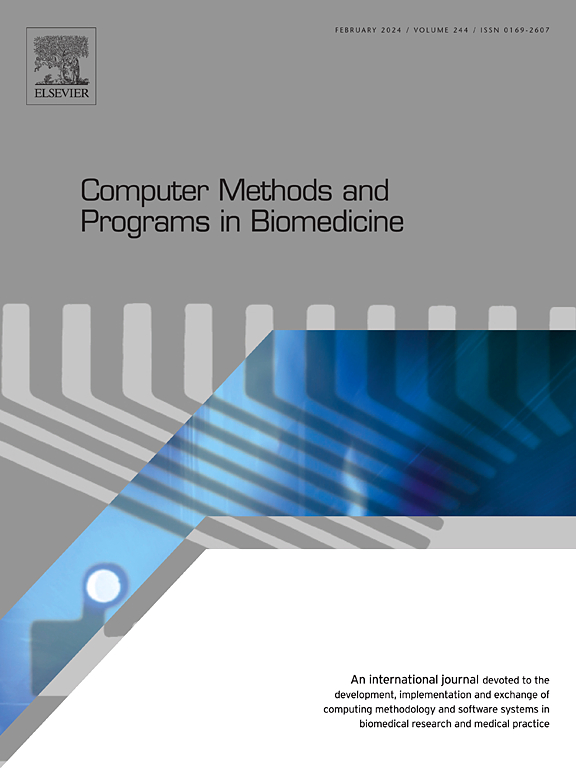利用资源博弈模拟遗传异质性的变化
IF 4.9
2区 医学
Q1 COMPUTER SCIENCE, INTERDISCIPLINARY APPLICATIONS
引用次数: 0
摘要
背景与目的:本研究通过考虑环境或外部资源对参与者适合度的影响,对经典的鹰鸽进化博弈模型进行了扩展。这使我们能够模拟由此产生的异质种群动态,这对于模拟癌症种群增长和优化抗癌治疗具有重要意义。方法:在经典空间进化博弈理论的基础上,引入多维空间进化博弈(MSEG)模型,建立种群异质性模型。这允许在多维晶格上研究遗传异质性。对经典的鹰鸽模型进行了修改,以反映外部资源的影响。在收益矩阵中包含了不同类型和形状的资源函数,并对其进行了模拟,以检验其对模型动态和群体异质性的影响。结果:结果在平均场和空间模型的时间依赖性图中呈现。此外,空间2D和3D矩阵显示了扩展的Hawk和Dove模型中分析的两种表型的空间分布。结果表明,对于相同的参数值,平均场模型与空间模型之间存在显著差异。此外,在比较不同资源函数的模型时,发现了差异。结论:采用双表型模型显示了外部、时间和表型特异性资源函数对游戏表型动力学的影响。此外,该研究还强调,与平均场模型相比,空间模型可以提供更准确的种群异质性信息,从而产生显著不同的结果。本文章由计算机程序翻译,如有差异,请以英文原文为准。
Modeling changes in genetic heterogeneity using games with resources
Background and Objective:
This study explores an extension of the classic Hawk and Dove evolutionary game model by considering the influence of environmental or external resources on the players’ fitness. This allows us to model the resulting heterogeneous population dynamics, which is of great importance for simulating cancer population growth and optimizing anti-cancer therapies.
Methods:
To model population heterogeneity, we are using an extension of classical spatial evolutionary game theory by introducing multidimensional spatial evolutionary games (MSEG). This allows for the study of genetic heterogeneity on a multidimensional lattice. The classic Hawk and Dove model is modified to reflect the impact of external resources. Various types and shapes of resource functions were included in the payoff matrix and then simulated to examine their impact on the model’s dynamics and population heterogeneity.
Results:
The results are presented in time-dependent plots for both mean-field and spatial models. Additionally, spatial 2D and 3D matrices are presented to show the spatial distribution of both phenotypes analyzed in the extended Hawk and Dove model. The results reveal significant differences between the mean-field and spatial models for the same parameter values. Furthermore, differences are observed when comparing models with different resource functions.
Conclusion:
The two-phenotype model was used to show the influence of external, time- and phenotype-specific resource functions on the dynamics of the game’s phenotypes. Moreover, the study highlights that spatial models, which provide more accurate information about population heterogeneity, can yield significantly different results compared to mean-field models.
求助全文
通过发布文献求助,成功后即可免费获取论文全文。
去求助
来源期刊

Computer methods and programs in biomedicine
工程技术-工程:生物医学
CiteScore
12.30
自引率
6.60%
发文量
601
审稿时长
135 days
期刊介绍:
To encourage the development of formal computing methods, and their application in biomedical research and medical practice, by illustration of fundamental principles in biomedical informatics research; to stimulate basic research into application software design; to report the state of research of biomedical information processing projects; to report new computer methodologies applied in biomedical areas; the eventual distribution of demonstrable software to avoid duplication of effort; to provide a forum for discussion and improvement of existing software; to optimize contact between national organizations and regional user groups by promoting an international exchange of information on formal methods, standards and software in biomedicine.
Computer Methods and Programs in Biomedicine covers computing methodology and software systems derived from computing science for implementation in all aspects of biomedical research and medical practice. It is designed to serve: biochemists; biologists; geneticists; immunologists; neuroscientists; pharmacologists; toxicologists; clinicians; epidemiologists; psychiatrists; psychologists; cardiologists; chemists; (radio)physicists; computer scientists; programmers and systems analysts; biomedical, clinical, electrical and other engineers; teachers of medical informatics and users of educational software.
 求助内容:
求助内容: 应助结果提醒方式:
应助结果提醒方式:


